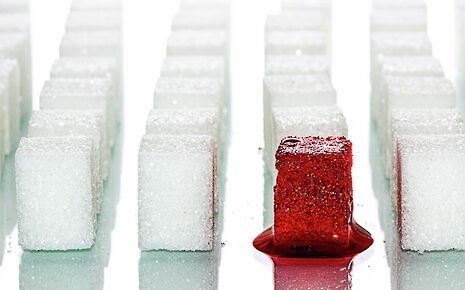Nanotechnology tackles developing world diabetes
Research from the University of Cambridge is leading efforts to diagnose diabetes in resource-poor areas.

Researchers at the University of Cambridge have developed a non-invasive reusable diabetes sensor, which can potentially widen access to diagnosis of the disease in resource-limited countries.
The research team hopes that their nanotechnology-based sensor, and others like it, will eventually play a key role in the diagnosis of diabetes in sub-Saharan Africa, the Middle East, South East Asia and South America, where the prevalence of diabetes is increasing rapidly.
All developing countries are facing a healthcare challenge coupled with inadequate resources to protect their population. The new sensor could be produced at a fraction of the cost of traditional disposable test strips.
“We envision that our sensors have the potential to be used as screening tools for diabetes in resource-poor countries, where disposable test strips and other equipment are not affordable,” said Ali Yetisen, the PhD candidate who developed the technology in Professor Christopher R. Lowe’s laboratory in the Department of Chemical Engineering & Biotechnology.
The sensor can assess glucose levels in urine, blood, saliva, or tear fluid. At a certain concentration, the sensor can reversibly change colour, making it a reusable technology. This colour can be automatically processed by a smartphone, or visually compared to a colour reference chart.
In addition to diabetes, the sensor may also enable the diagnosis of bacterial urinary tract infections, which can be characterised by abnormally low levels of glucose in urine. Not only is the sensor comparable to state-of-the-art glucose monitoring technology, but it also has improved performance compared with commercial glucose test strips read by an automated reader.
The metal nanoparticles are distributed in alternating layers in thin gel films. The use of laser writing allows the sensors to be easily manufactured at scale, which is important in keeping costs low. Disposable urine strips cost 10p, while the new sensor can be used over 100 times at an estimated manufacturing cost of about 20p.
This reusable technology is a significant development for resource-poor areas. When the prototype is developed to become a product, it will be suitable for use in both clinics and at home, and has the potential to widen access to both diagnosis and monitoring. Those who may benefit include the world’s estimated 175 million undiagnosed diabetics. The International Diabetes Federation reported that 80 per cent of these live in low- and middle-income countries.
Diabetes is a serious illness, killing over 5 million people last year. The number of people with diabetes is expected to rise dramatically over the next 20 years, from 382 million to 592 million in 2035. Careful monitoring is a key component of controlling the disease.
The sensor was used by 33 diabetic patients at Addenbrooke’s Hospital to monitor their urine glucose levels. Recently, a Canadian NGO, Ghana Medical Help, expressed interest in carrying out further clinical testing in the upcoming years. However, Yetisen says that the technology is still in its early stages, and will not become available for five to ten years. “In order for new diagnostic technologies to get into market, an investment of 10-50 million pounds is required, in addition to a handful of motivated scientists who can follow a cause,” he said.
It may not only be low- and middle-income countries looking to this research with interest. Diabetes accounts for 11 per cent of US healthcare spending. Europe has the highest prevalence of children with type 1 diabetes in the world, and type 2 diabetes is increasing in every country worldwide.
Dr Fernando da Cruz Vasconcellos, who co-authored the recent paper in Nano Letters, said, “The value of these sensors will be realised when they are fully integrated into point-of-care mobile healthcare devices, which will allow for effective monitoring, prevention and diagnosis of diabetes.”
The researchers now aim to continue the development of this technology with a prototype smartphone-based test.
 News / Police to stop searching for stolen Fitzwilliam jade17 April 2024
News / Police to stop searching for stolen Fitzwilliam jade17 April 2024 News / Copycat don caught again19 April 2024
News / Copycat don caught again19 April 2024 Interviews / ‘It fills you with a sense of awe’: the year abroad experience17 April 2024
Interviews / ‘It fills you with a sense of awe’: the year abroad experience17 April 2024 News / Night Climbers call for Cambridge to cut ties with Israel in new stunt15 April 2024
News / Night Climbers call for Cambridge to cut ties with Israel in new stunt15 April 2024 News / Acting vice-chancellor paid £234,000 for nine month stint19 April 2024
News / Acting vice-chancellor paid £234,000 for nine month stint19 April 2024




